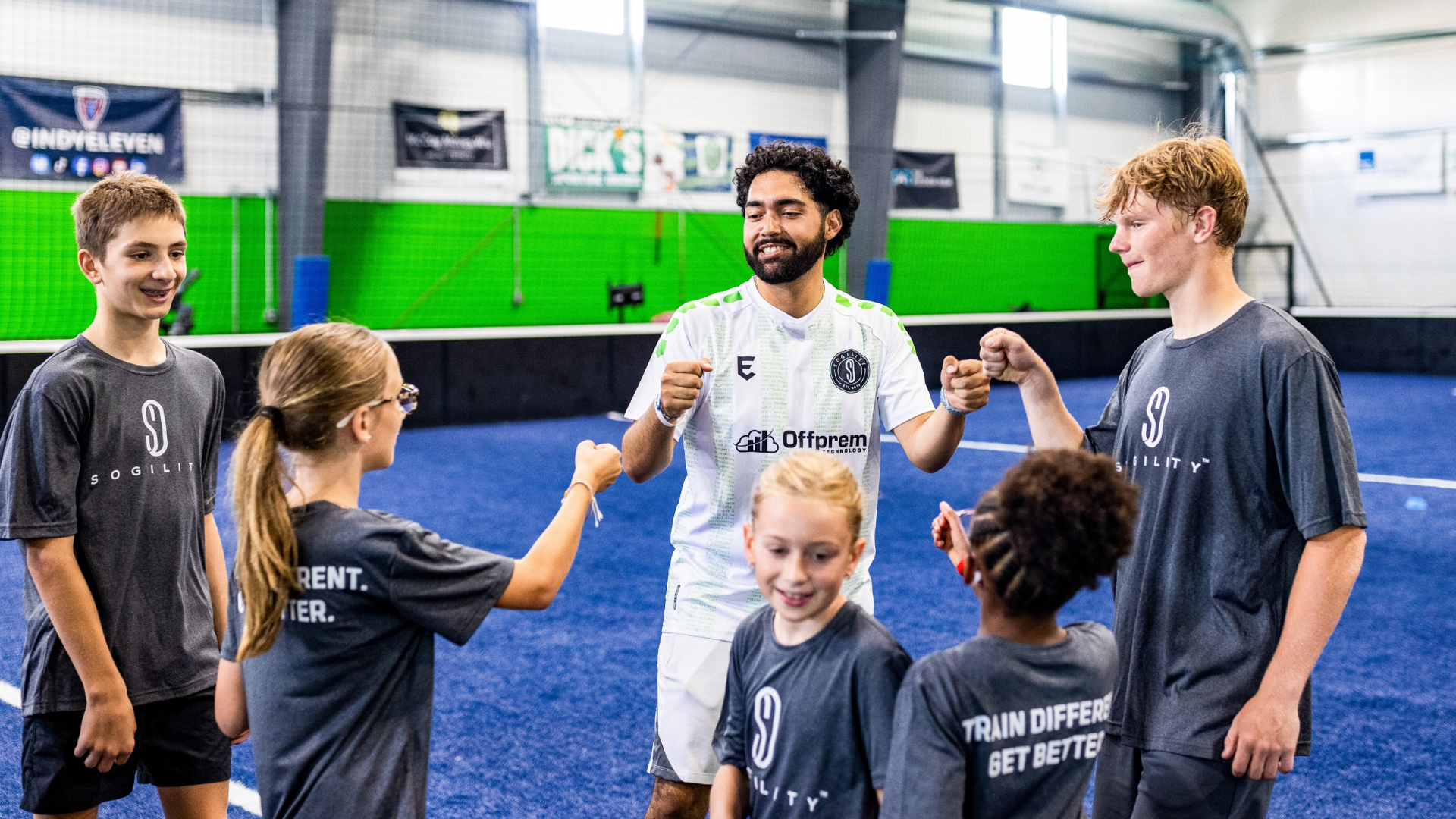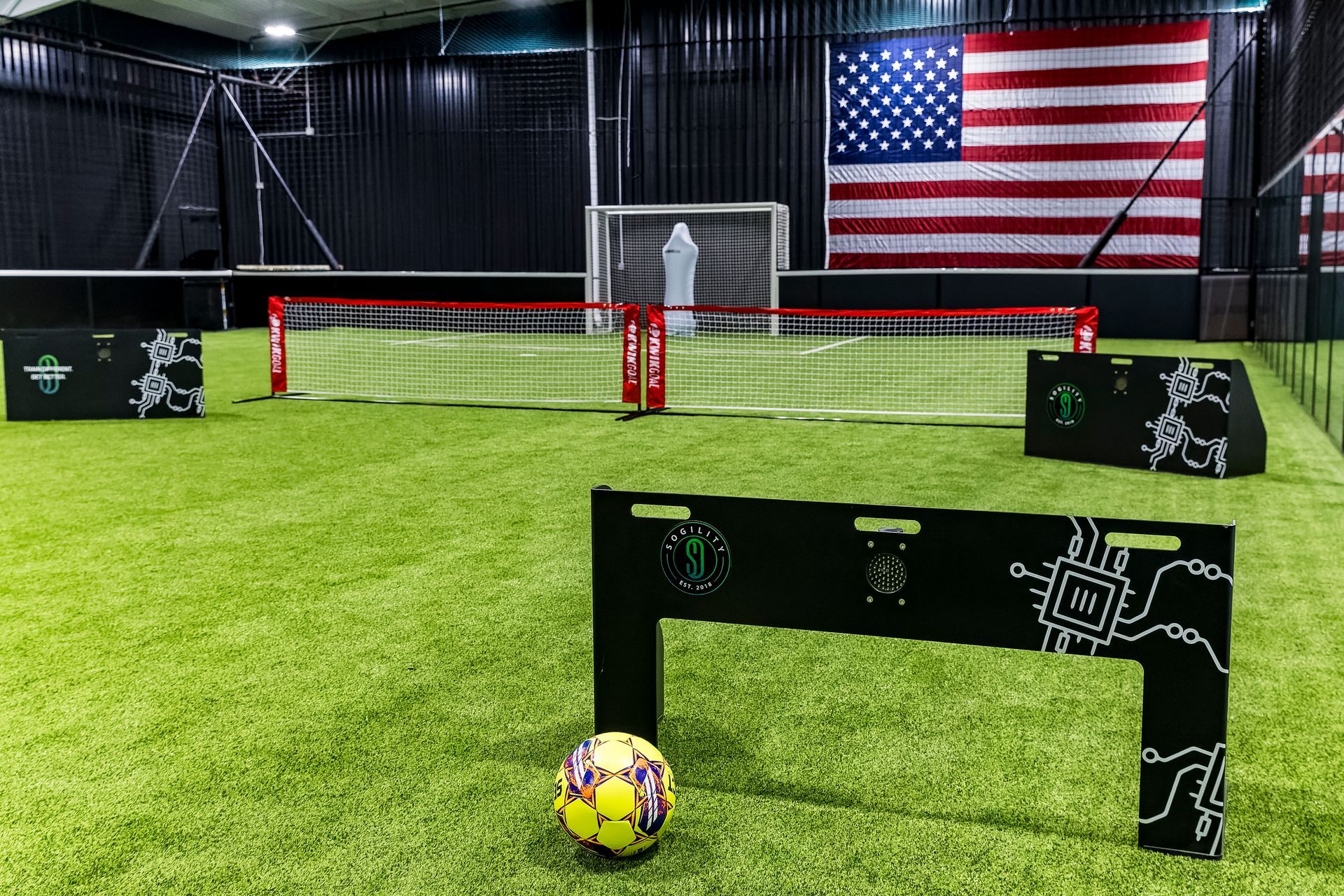February 28, 2024
Exploring the Relationship of Soccer and Music
In the grand tapestry of human culture, the threads of soccer and music are woven together in a mesmerizing dance. Beyond the cheers of the crowd and the rhythmic beats of the game, lies a profound connection that transcends the boundaries of the playing field.
1. The Pre-Game Ritual: Anthems that Echo Through Time
Every soccer match begins with a ritualistic anthem, a sonic herald that unites players and fans alike. As the familiar notes reverberate through the stadium, they carry the weight of history and pride. These anthems, often deeply rooted in national identity, serve as a prelude to the spectacle that is about to unfold. From the iconic “You’ll Never Walk Alone” at Anfield to the passionate rendition of national anthems during international competitions, these musical preludes set the stage for the drama to come.
2. Goal Celebrations: The Soundtrack of Triumph
When the ball finds the back of the net, the stadium erupts into a cacophony of joy. It is in these moments of triumph that music and soccer share an intimate embrace. Goal celebrations become spontaneous concerts, with fans chanting, singing, and even composing impromptu songs to immortalize the euphoria. From the infectious rhythms of South American samba celebrations to the orchestrated chants of European ultras, the music of goals is universal in its ability to evoke raw emotions.
3. The Global Jukebox: Soccer’s Impact on Musical Trends
Soccer is a global phenomenon, and its influence extends far beyond the pitch. The sport has played a pivotal role in shaping musical trends, creating a global jukebox that resonates with diverse audiences. Iconic moments in soccer history are often accompanied by equally memorable soundtracks. From the electrifying beats of techno anthems in European stadiums to the rhythmic drumming of African and South American percussion, soccer has become a curator of musical diversity.
4. Soccer Stars as Musical Maestros
Beyond the world of fandom, some soccer stars double as musical maestros. Whether it’s showcasing their vocal talents or displaying prowess with musical instruments, these athletes prove that their skills extend beyond the confines of the soccer field. From Neymar’s collaborations with Brazilian musicians to the musical endeavors of Manchester City’s Sergio Agüero, soccer stars are increasingly leaving their mark on the music industry.
5. Unifying Communities: Soccer and Musical Movements
Soccer has an innate ability to unite communities, and music often serves as the soundtrack to this unity. Fans around the world create chants, songs, and anthems that become the rallying cries of their teams. In this way, music becomes a powerful force for social cohesion, bridging gaps and fostering a sense of belonging among diverse groups of supporters.
The interplay between soccer and music is a rich tapestry woven with threads of emotion, culture, and shared experience. Beyond the confines of the playing field, these two art forms converge to create a symphony that resonates with millions worldwide. As we witness the beautiful game unfold, let us not forget to tune our ears to the harmonious score that accompanies every kick, every goal, and every moment that makes soccer an enduring cultural phenomenon.
For more information on Sogility’s technology driven soccer training visit sogility.net.
The post Exploring the Relationship of Soccer and Music
appeared first on Sogility.

At Sogility, our trainers are more than coaches, they’re mentors, motivators, and role models who help athletes discover their potential. This month, we’re excited to spotlight one of our dedicated Sogility Westfield trainers: Allan Ramirez. A Unique Soccer Journey Allan’s soccer story begins in Mexico City, where he was born and developed an early passion for the game. Unlike many players who rise through traditional youth club systems, Allan’s path looked very different. He only played one year of high school soccer and never played travel or club soccer growing up. Instead, he sharpened his skills in local adult leagues at a young age. His determination and love for the sport propelled him forward, eventually leading him to play semi-pro for multiple seasons and earn opportunities to try out for professional clubs. Allan’s unconventional path is proof that there is no single way to pursue the game, and that passion can take you far.

Holiday breaks can disrupt a player’s rhythm, but they can also be the perfect time to reset, refocus, and make meaningful progress. With the right approach, players can return to winter training sharper, stronger, and more confident—without sacrificing time with friends and family. At Sogility, we believe the holiday period is one of the most underrated training windows of the year. Here’s how to make the most of it. 1. Schedule Quick, Efficient Sessions Training during the holidays doesn’t need to feel overwhelming. Short, intentional sessions are not only easier to fit into a busy schedule, they’re incredibly effective for skill retention. Try aiming for: 3–4 sessions per week 20–30 minutes each Focused work on technique, speed of play, and ball familiarity These bite-sized sessions help maintain sharpness without burning players out. A few minutes of ball mastery or first-touch work done consistently over the break can have a huge impact once formal training resumes. Pro Tip: Pair a quick technical session with a simple fitness component—such as sprints, agility ladders, or core work—to stay game-ready as you enjoy holiday meals and downtime. 2. Take Advantage of Indoor Time Winter weather isn’t always friendly to outdoor training, but the holidays provide excellent opportunities to get creative indoors. You don’t need a full field to develop high-level skills—just a ball and a small space. Great indoor activities include: Focused work on technique, speed of play, and ball familiarityBall mastery (toe taps, inside–outside touches, sole rolls) Footwork ladders or cone patterns to develop agility Quick wall passes to improve first-touch and reaction speed Target passing using laundry baskets, tape squares, or furniture as safe targets Indoor training is especially helpful for developing control, coordination, and quick feet, skills that translate directly to better performance in small-sided play and high-pressure moments. Bonus Idea: Parents and siblings can join in, turning quick sessions into fun family challenges. This keeps training lighthearted and enjoyable during the holiday season. 3. Keep It Fun The holidays are a time to relax, recharge, and reconnect with the joy of playing soccer. Keeping training fun during the break helps players stay motivated and rediscover their creativity. Try adding: Trick-shot or accuracy competitions 1v1 games with friends or siblings Freestyle or juggling challenges Fun play builds confidence and improves problem-solving skills on the field—the type of creativity coaches love to see. Remember: When players enjoy the game, their technical development accelerates naturally. 4. Use Technology to Track Progress One of the biggest advantages of holiday break training is the ability to measure improvement in a short window of time. At Sogility, our tech-enhanced training stations are built for exactly this. With these tools, holiday break doesn’t just maintain your level, it elevates it. Players return to team training with sharper touches, quicker reactions, and increased confidence. Holiday Advantage: Most players slow down during winter break. Using tech-enhanced training gives you a competitive edge heading into winter and spring seasons. Final Thoughts: Make the Holidays Your Growth Season The holiday break is a valuable opportunity, not a setback. With short, targeted sessions, indoor creativity, fun-focused play, and Sogility’s training technology, players can make meaningful progress while still enjoying the season. Final Thought Whether you’re preparing for tryouts, winter league, or spring soccer, staying active during the holidays ensures you return with momentum, not rust.

All You Need in the Game: Master Essential Skills for Better Performance At Sogility, we know that mastering the essential skills of soccer requires more than just physical fitness — it demands speed, precision, sharp decision-making, and mental toughness. That’s why we offer Circuit Training , a revolutionary program that combines cutting-edge technology with innovative drills to prepare players for the fast-paced, high-pressure challenges of real-game play.
